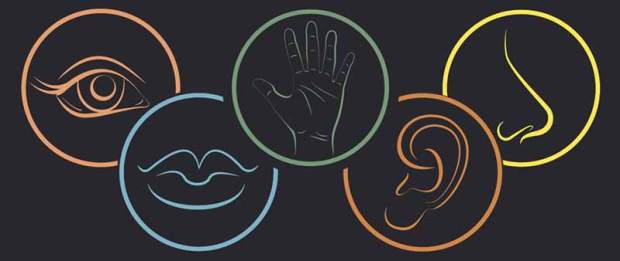
While browsing one of the many newsletters I receive daily by e-mail, I discovered this very interesting feature on the BookBaby blog by Carla King and wanted to share it with you.

Sight is the most obvious of the senses to invoke when depicting a scene in your written work, but your visual descriptions will benefit when you incorporate your other senses to enrich your writing.
First drafts of most travelogues are full of rich, visual detail, but often fall short on smells, tastes, sounds, and feelings. I’ve learned to add an editing round to incorporate all the senses, and am constantly surprised at all the new memories that are conjured up and the rich expansion of each scene. I’ve noticed that quite a lot of nice metaphors and similes come out of this exercise, too.
Sight
The most obvious and easiest of the senses to describe, sight delivers on color and texture and important aspects of scenes like landscapes, cityscapes, objects, and faces. Your visual descriptions will often benefit from the addition of another sense or two.
Smell
The sense of smell is the most closely linked with memory, and is highly emotive, as perfumers know. For example, you might transport the reader to a seaside village on a Croatian island by describing the slightly sweet, putrid scent of seaweed baking at low tide in the late afternoon sun.
Taste
Did you know that at least 75% of is taste actually formed from smell? Taste can be broken down into five areas: salty, bitter, sweet, sour, and umami, a Japanese word meaning “pleasant savory taste.” So the aroma of that rotting seaweed contributes more than you might realize to the taste of the oyster you just slurped.
Touch
Unlike the other senses, the sense of touch is generously distributed all over the skin and even inside your body. With five million sensory nerve receptors (and over twenty different types of pain nerve endings) we can afford to spend a little more time on touch. Does the smell of rotting seaweed bring on a tightening of your throat, making it difficult to slip that oyster down? Readers want to know what that felt like (sort of). The feel of a handshake can reveal a page’s worth of character-building visual description. Keep in mind that the most sensitive areas of the body are your hands, lips, face, neck, tongue, fingertips, and feet.
Sound
Hearing is often described as the most important sense because it’s our early warning system. Our hearing separates complicated sounds into tones or frequencies that our minds track individually. We can follow a variety of strains of voices or instruments while also taking note of the slap of water on a boat hull, the whistle of wind through a crack in the window, the tinkle of glasses, a backfiring engine. Descriptions of sounds can backlight a scene or create drama with sudden impact.
Synesthesia
Have some fun with synesthesia, the art of assigning one sensation to another: color to sound, smell to color, sound to smell, etc. Here’s a line from Bruno Schultz’s Street of the Crocodiles: “Adelia would plunge the rooms into semi darkness by drawing down the linen blinds. All colors immediately fell an octave lower; the room filled with shadows as if it had sunk to the bottom of the sea and the light was reflected in mirrors of green water.”
Original link to Carla King’s feature HERE
About Carla King
Carla King was turned down by big publishing in 1994, so she self-published her guidebook to bicycling the French Riviera. She made enough money to return to France twice more, which helped her fall in love with the self-publishing process. In 2010, she founded Self-Pub Boot Camp, a program of books, workshops, and virtual classes that step authors through the publishing process. Carla is a frequent speaker on adventures in travel, writing, and publishing.The 3rd edition of her Self-Publishing Boot Camp Guide for Authors, released in March, has been downloaded over 30,000 times. Find her at SelfPubBootCamp.com and CarlaKing.com.
Great post! Thanks for sharing. That last line had me awestruck. Wow, what gorgeous writing.
I love to use as many sensory details as I can in stories. When people read City of Ghosts, for instance, I hope they can smell, see, feel, touch and taste China…through a tourist’s POV.
Thanks so much for all the kind words and encouragement, Dave. It means a lot.
LikeLike
Hi Holli, I completely agree about the last line, so descriptive. It’s one of those lines you read and say “Damn, I wish I’d written that.” I love the visual of colors being an octave lower.
It’s not just in “City of Ghosts” but in “The Girl Who Talks to Ghosts” as well. The sensory detail you added let the reader know that the stories were written by someone who had been to China and Poveglia Island (you’re braver than me to go there, by the way).
My pleasure on the kind words and encouragement and thank you for your comments and encouragement on my work. I really enjoyed both books and it’s rare for me to sit and read two books in less than a week as I try and devote some of my spare time for my writing. I can’t wait to see where the next part of the story takes us.
LikeLike